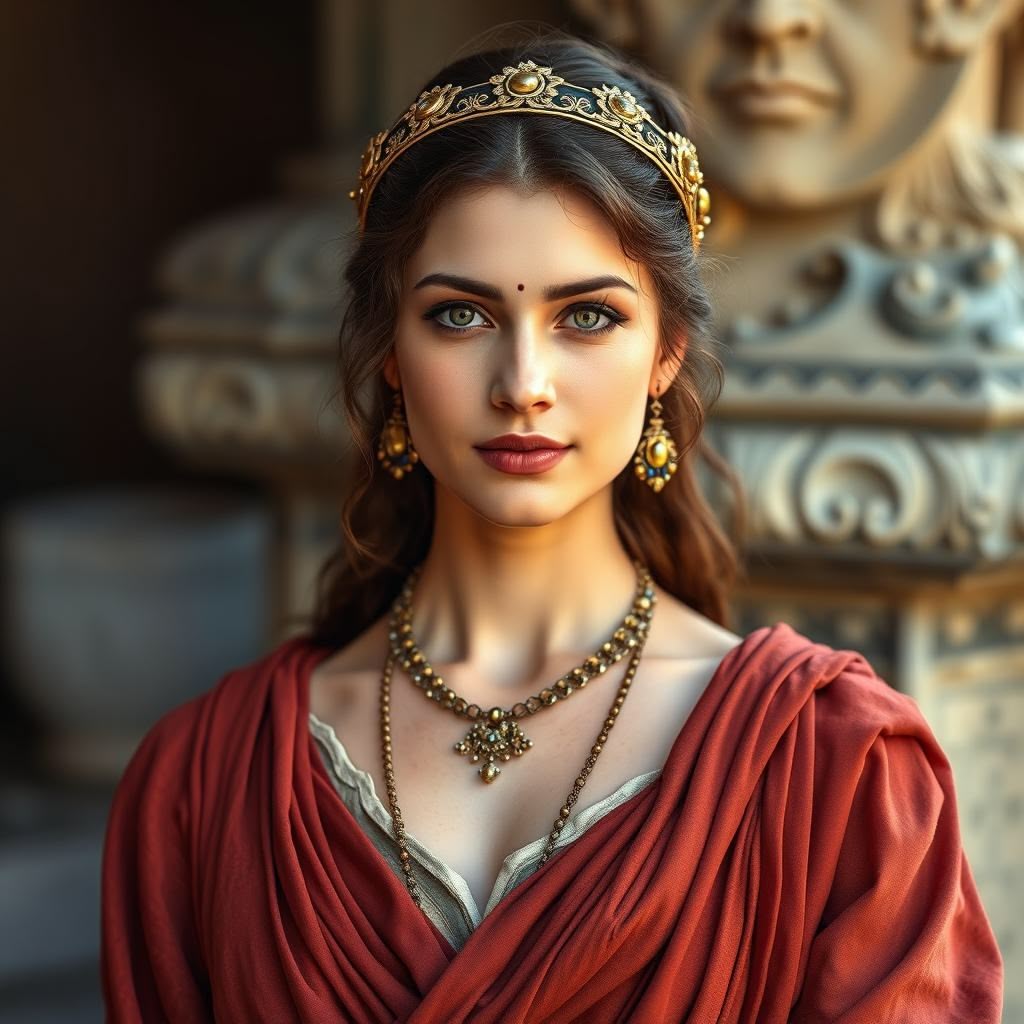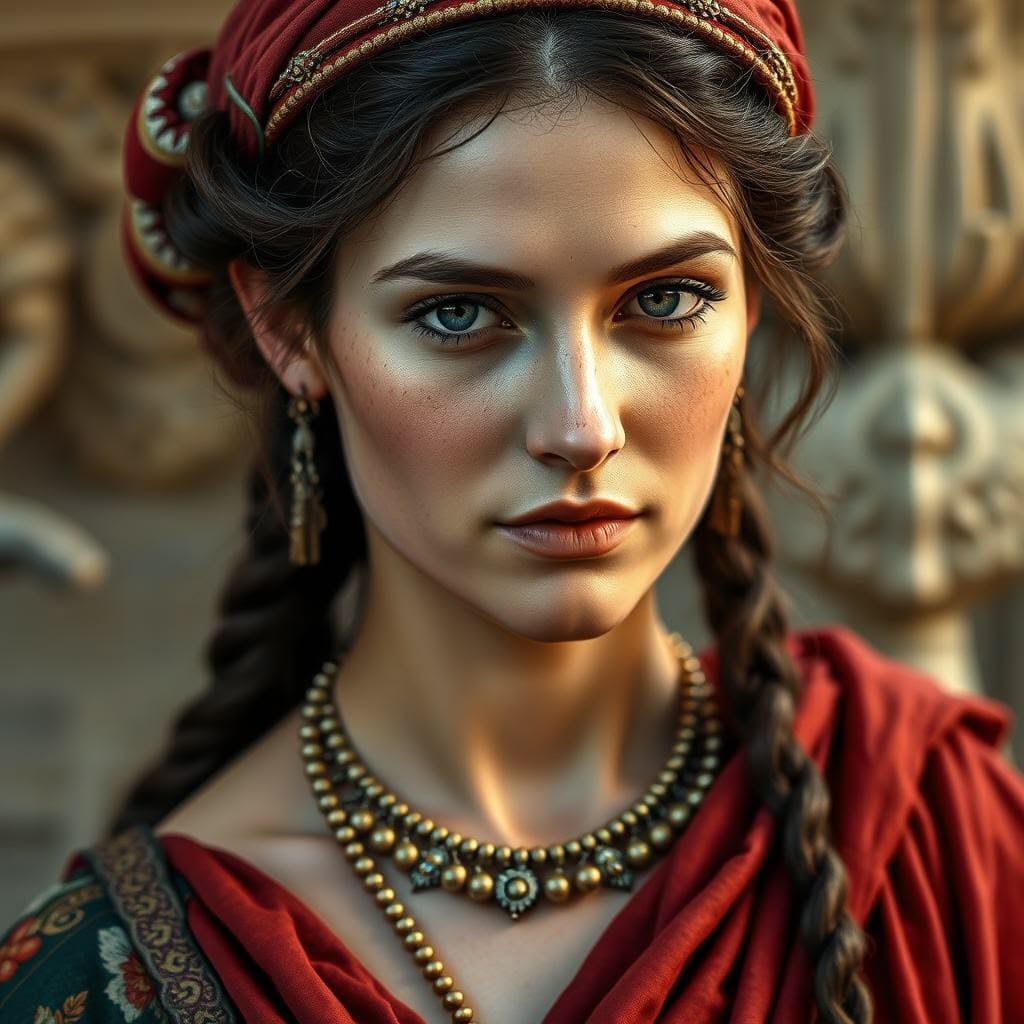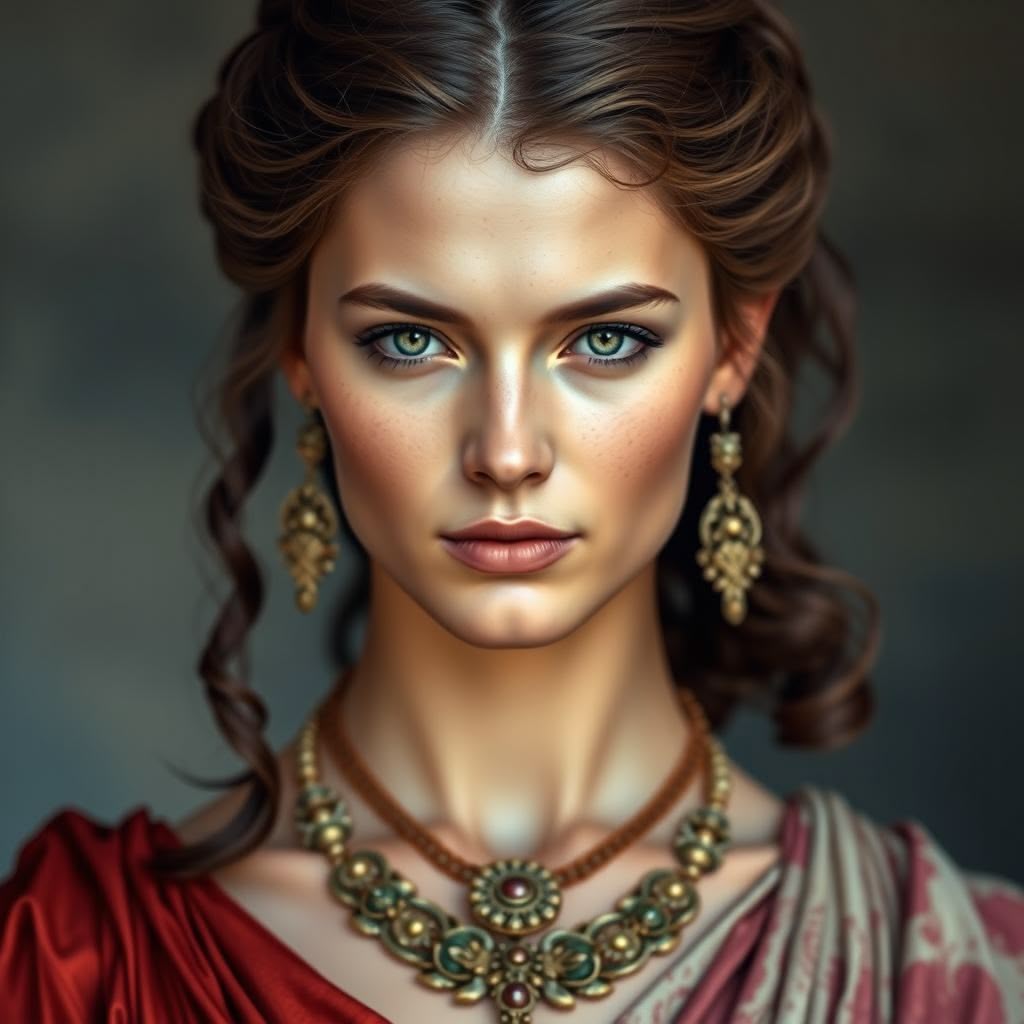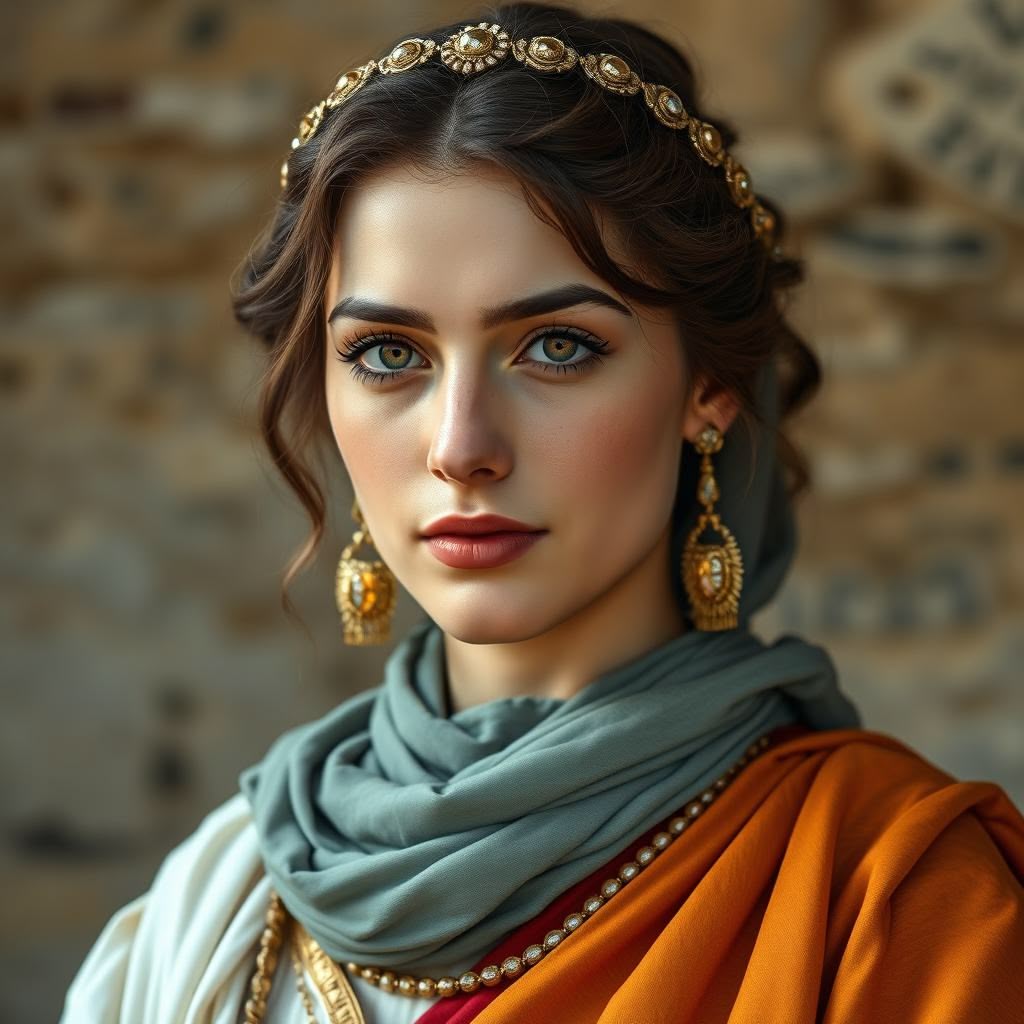oman women’s fashion was a rich tapestry of clothing, cosmetics, and status symbols that communicated identity and social rank within Ancient Rome. Fashion was not just about personal style; it served as a visual language reflecting one’s place in the complex hierarchy of Roman society, which was shaped by the structure of power in the Roman Republic and later by the expansive reach of the Roman Empire.
Key elements defining Roman women’s fashion included:
- Clothing that balanced practicality with symbolic meaning, such as specific garments reserved for married women or those of elite status.
- Cosmetics that enhanced beauty ideals like pale skin and emphasized features through the use of natural pigments.
- Status symbols embedded in accessories and dyes, signaling wealth and power visibly to others.
Understanding these components reveals how Roman women expressed themselves culturally while navigating societal expectations, often influenced by their legal status and associated rights and restrictions. This article explores these facets in detail, unveiling Roman women’s fashion: clothing, cosmetics, and status symbols as markers of identity and influence. Through this exploration, we not only delve into the intricacies of fashion but also into the broader societal context including the governance structure, the rise and fall of an empire, and the legal frameworks surrounding women’s rights that shaped their lives.

Clothing in Roman Women’s Fashion
Roman women’s clothing was more than just fabric; it was a clear marker of identity and social standing. The two primary garments defining their attire were the stola and the palla.
The Stola: Signifying Citizenship and Marital Status
This long, flowing tunic-like dress was the hallmark of a respectable married woman. Typically sleeveless or with short sleeves, the stola fell gracefully to the ankles and was often pleated or gathered at the waist with a belt. Its elegant simplicity was purposeful—modest yet distinguished, setting married women apart from unmarried girls or slaves. Wearing a stola signified a woman’s citizenship and marital status.
The Palla: A Cloak of Modesty and Style
Complementing the stola, the palla functioned as a cloak or wrap draped over the shoulders. It could be pulled over the head in public as a sign of modesty or worn loosely to display style. The way a palla was folded and worn spoke volumes about personal taste and social rank.

Materials Reflecting Wealth and Access
Materials used in these garments reflected wealth and access:
- Wool and linen were common for everyday wear among most women.
- Silk fabrics, imported from the East through complex trade routes that included Roman roads, were prized luxuries reserved for the affluent elite. Wearing silk instantly elevated a woman’s social appearance.
- The use of purple dye stood out as one of the most potent status symbols in Roman clothing. Extracted from the murex sea snail, purple dye was incredibly expensive and labor-intensive to produce. Only noble families and high-ranking individuals had access to garments adorned with this prestigious color.
“Purple is the royal color,” Romans believed—a reflection not only of wealth but also political power and influence.
Subtle Signals of Aristocracy
Sometimes, purple stripes (clavi) decorated the edges of garments like stolas, subtly signaling aristocratic lineage without ostentation. The rarity of purple made it exclusive, distinguishing elite women from common citizens at a glance.
Craftsmanship Emphasizing Refinement
The craftsmanship behind these textiles was significant too. While embroidery was scarce due to its cost, fine weaving techniques produced smooth fabrics that draped elegantly on Roman women, emphasizing refinement without excess.
Clothing Choices: Communicating Social Hierarchy
Clothing choices thus communicated much more than fashion sense—they broadcast social hierarchy and cultural values deeply embedded in Roman society. This intricate relationship between clothing, social status, and cultural values can also be seen in other aspects of Roman life such as their military practices, which played a crucial role in shaping their empire as highlighted in our article on The Roman Army.
Moreover, understanding these clothing choices provides insights into the broader economic context of ancient Rome, including how textiles were produced and traded across regions, reflecting not just personal wealth but also contributing to the empire’s economy.

Hairstyles as Status Symbols
Hairstyles in Ancient Rome were more than just a personal choice; they were clear signs of a woman’s wealth, social rank, and marital status. One hairstyle that stood out was the tutulus hairstyle, which symbolized marriage. This unique updo involved a braided bun shaped on top of the head, often wrapped in bands of cloth, indicating that a woman was married and respected in Roman society.
Reflecting Wealth through Complexity
The complexity and extravagance of hairstyles also showed a family’s wealth. Wealthier women spent a lot of time and money on their hair, hiring ornatrices, professional hair stylists or slaves who specialized in creating elaborate hairstyles. These experts could make intricate curls, braids, and towering arrangements that not only showcased fashion but also signified social standing.

Enhancing Hairstyles with Accessories
Hair accessories further enhanced these hairstyles, serving as tangible status symbols:
- Gold-wire hairnets provided both decoration and structure.
- Diadems (tiaras) made from precious metals indicated elite status.
- Decorative pins and combs added sparkle with embedded gems or intricate designs.
Such adornments were not just for show but communicated messages about the wearer’s position in the social hierarchy. The more elaborate the hairstyle and accessories, the higher a woman’s perceived rank. Women from wealthy families often wore towering styles supported by wire frameworks or hairpieces made from human hair to add volume—luxuries that lower classes couldn’t afford.
Men’s Grooming: A Contrast
Men’s grooming was relatively simple compared to women’s hairstyles, focusing on short haircuts without extravagant styling. This difference highlighted how women’s hairstyles were important markers within Rome’s complex system of social codes.
In this way, Roman women’s hairstyles combined artistry with social purpose—each curl and accessory carefully selected to convey identity and status in a visually striking way.
Modern Influence
Interestingly, the fascination with Roman hairstyles goes beyond history into modern times, influencing various aspects of culture including role-playing games like Second Life, where users can immerse themselves in environments reminiscent of ancient Rome.
Moreover, understanding the societal implications of such hairstyles provides valuable insights into broader themes within Roman history such as those explored in discussions about significant figures like Scipio Africanus who played pivotal roles during notable historical events like the Second Punic War.
Lastly, the intricate social structures reflected in these hairstyles also hint at the sophisticated legal systems that governed Roman society, principles which have significantly shaped modern legal systems.

Cosmetics and Beauty Standards in Ancient Rome
Roman women placed great importance on cosmetics as part of their daily grooming routine, using them not just for enhancement but as markers of social status. The pursuit of pale skin fashion was a dominant ideal among the elite, symbolizing beauty and leisure. A pale complexion suggested that a woman did not have to labor outdoors, distinguishing her from lower classes.
Popular Cosmetics in Ancient Rome
Some popular cosmetics used by Roman women include:
- Red ochre: This natural pigment was applied to the cheeks to create a healthy, rosy flush. Roman women valued this subtle touch of color as it conveyed vitality without appearing artificial.
- Kohl makeup: Used to darken the eyelids and enhance the eyes, kohl was imported from Egypt and made from soot or lead-based compounds. It created dramatic contrast against pale skin and emphasized an alert, youthful appearance.
- White powders: To achieve the coveted pale complexion, women used chalk-based powders or lead carbonate mixtures. These provided a smooth, luminous finish but could be harmful over time due to toxic ingredients.
- Lip color: Reds extracted from plants like madder root or crushed berries added delicate tint to the lips, complementing the rosy cheeks.
Beyond Cosmetics: Other Beauty Standards
Beauty standards in Ancient Rome extended beyond cosmetics. Women aimed for symmetrical facial features and clear skin without blemishes. Hair color preferences varied by era and social class but often leaned toward golden blonde shades achieved through bleaching or wigs.
Symbolism Behind Cosmetics
Cosmetics also carried symbolic weight. Their use indicated refinement and access to luxury goods. Excessive makeup could be viewed negatively, associated with actresses or prostitutes rather than respectable matrons. Careful application balanced enhancement with modesty.
These beauty rituals were part of a larger societal framework that included various aspects such as clothing and status symbols, as discussed in our comprehensive article on Unveiling Roman Women’s Fashion: Clothing, Cosmetics, and Status Symbols. This reveals how appearance intertwined with identity and societal expectations while reinforcing social hierarchy but allowing personal expression within accepted norms.
Moreover, understanding these cosmetic practices provides insight into the wider cultural context of Ancient Rome, which included significant entertainment spectacles like gladiator games and chariot races. Such events played a crucial role in shaping social relationships and political authority during that era, as detailed in our content about The Spectacle of Ancient Rome.
Furthermore, these beauty standards and practices were not just superficial; they were intertwined with the legal systems of the time as well. The [Twelve Tables](https://www.menofpompeii.com/how-the-twelve-tables-shaped-roman-legal-systems), which were the first attempt to codify Roman law, also reflected societal values including those related to beauty and status.
Lastly, it’s essential to recognize the enduring influence of Ancient Rome on Western civilization. The legacy of Ancient Rome continues to shape various aspects of modern society today.

Jewelry and Accessories for Social Display
Jewelry in ancient Rome was more than just decoration; it was a clear sign of social status and wealth. Roman women used gold and silver jewelry extensively to show their position in society, which was mainly defined by the sharp divide between the rich patricians and the working-class plebeians. These precious metals were chosen for their scarcity, shine, and strength.
Key features of Roman women’s jewelry include:
- Gold and silver pieces: Earrings, necklaces, bracelets, and rings crafted from these metals often featured intricate designs such as granulation and filigree. The craftsmanship demonstrated not only wealth but also access to skilled artisans.
- Gemstones: Incorporating gems like garnets, emeralds, and sapphires added color and symbolism. Gemstones were believed to carry protective or healing properties, enhancing the jewelry’s value beyond aesthetics.
- Hair ornaments: Gold pins, diadems (similar to tiaras), and hairnets made from fine gold wire helped complete elaborate hairstyles while signaling high status.
One particularly notable piece was the anulus aureus, a ring made of pure gold. This ring was not merely decorative; it functioned as a significant social symbol:
- Worn by members of the equestrian class, the anulus aureus indicated both rank and privilege.
- Its presence on a woman’s hand marked her connection to elite circles and often implied family wealth or political influence.
- The ring’s design was typically simple yet elegant, underscoring exclusivity without ostentation.
Jewelry was often paired with other accessories like finely crafted belts or brooches that held garments together, further displaying wealth through materials and artistry. The visible display of these luxury items reinforced social distinctions in public settings such as forums, banquets, and religious ceremonies.
Roman women’s choice of jewelry communicated identity clearly—each piece a deliberate statement about their place in society’s complex structure. This social class divide was not only reflected in their choice of accessories but also in their daily lives and economic activities. For instance, while the patricians enjoyed luxury and power as masters of Roman luxury, the plebeians represented the majority of the population whose lives were vastly different yet essential for understanding the social dynamics of Rome.
Moreover, the economic growth during this period was significantly driven by agriculture, which extended beyond mere food production. Such economic factors played a crucial role in shaping social hierarchies.

Conclusion
Roman women’s fashion was much more than mere clothing or adornment; it was a vivid language of cultural identity and social hierarchy. Every element, from the stola’s fabric and color to the intricacies of hairstyles, cosmetics, and jewelry, communicated a woman’s place within Roman society.
Unveiling Roman Women’s Fashion: Clothing, Cosmetics, and Status Symbols shows how these visual markers intertwined personal expression with public recognition. Understanding these layers enriches our appreciation of how fashion served as a mirror reflecting the values and structure of Ancient Rome.
This reflection is not limited to fashion alone but extends to other facets of Roman life such as their religious practices, which intertwined with every aspect of their lives influencing politics, culture, and social structures. Furthermore, the rise of Stoicism in Roman culture also played a significant role in shaping societal norms and values during that period.
Moreover, the influence of Roman architectural innovations cannot be overlooked. These were not merely functional structures but masterpieces of ancient engineering that served as a testament to their power and cultural identity. The significance of Roman engineering feats lies in its capacity to connect far-flung regions, ensuring effective governance and cultural exchange.

